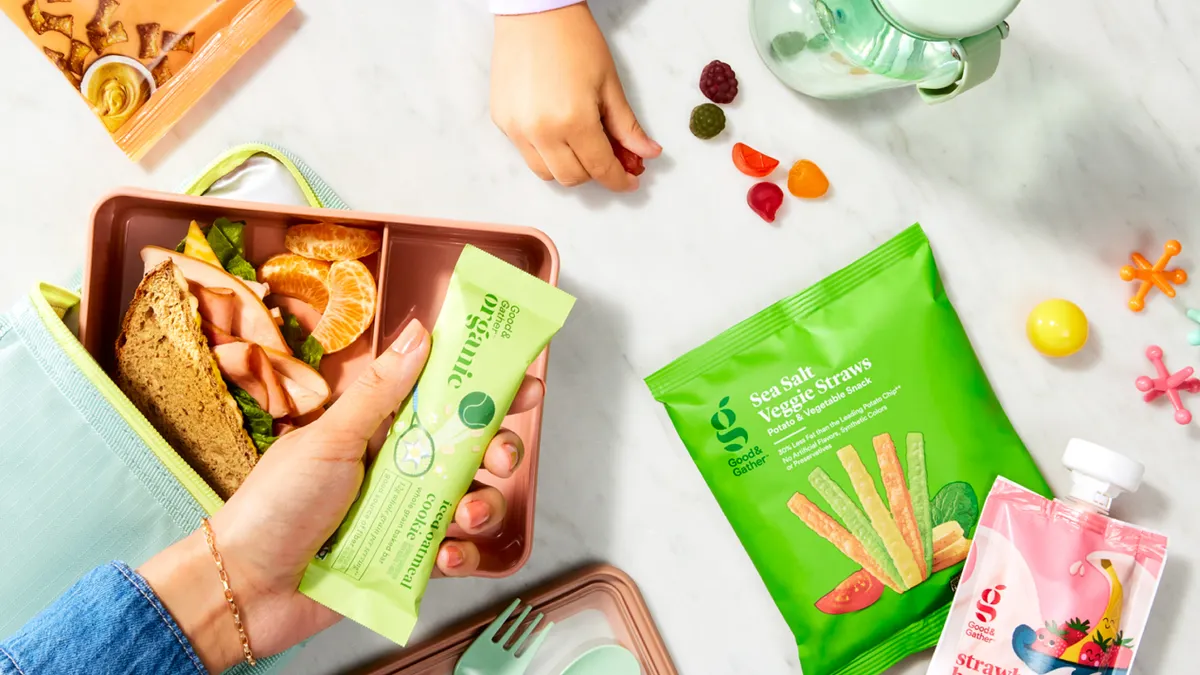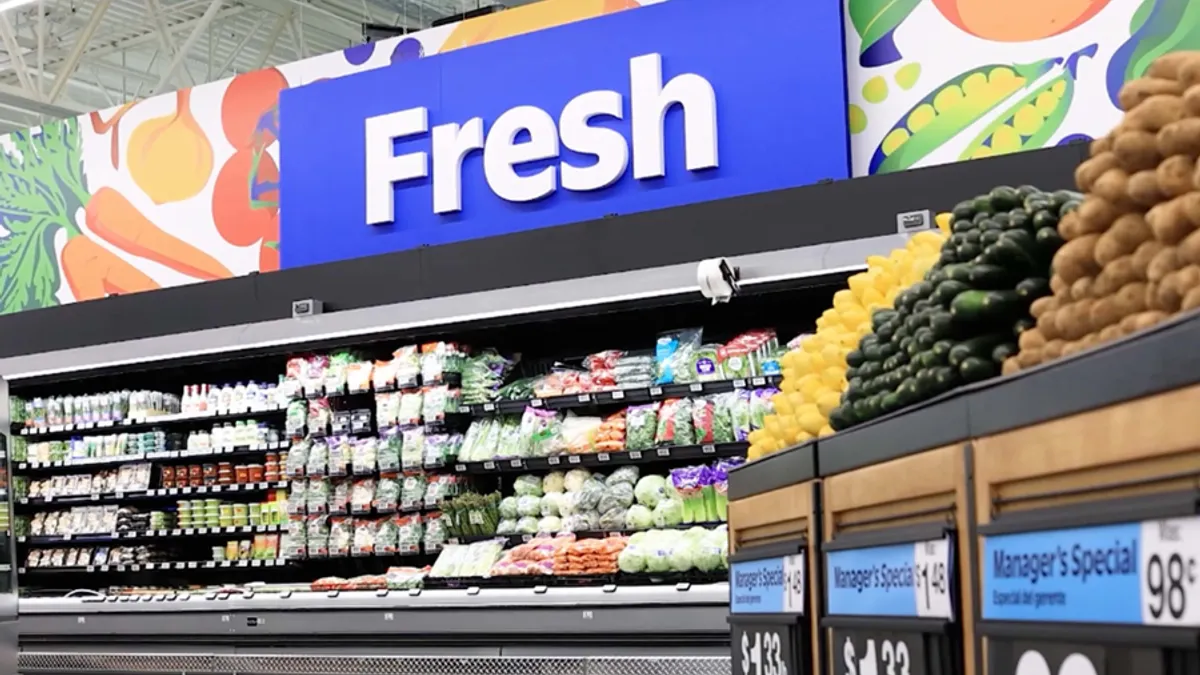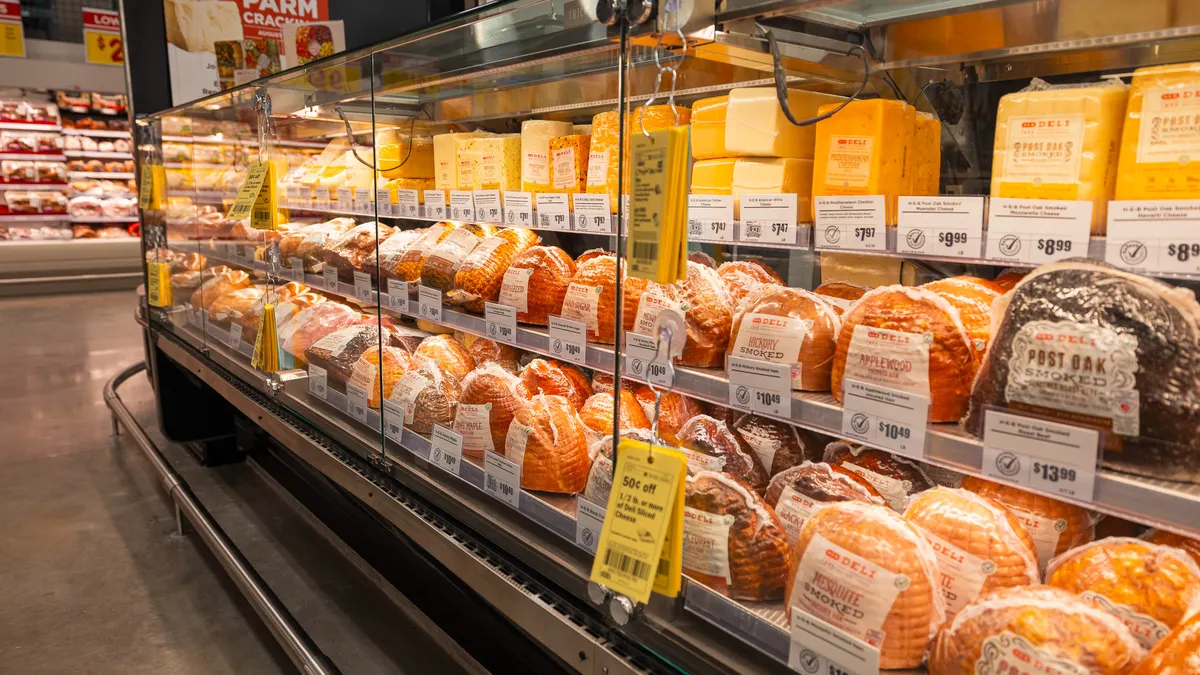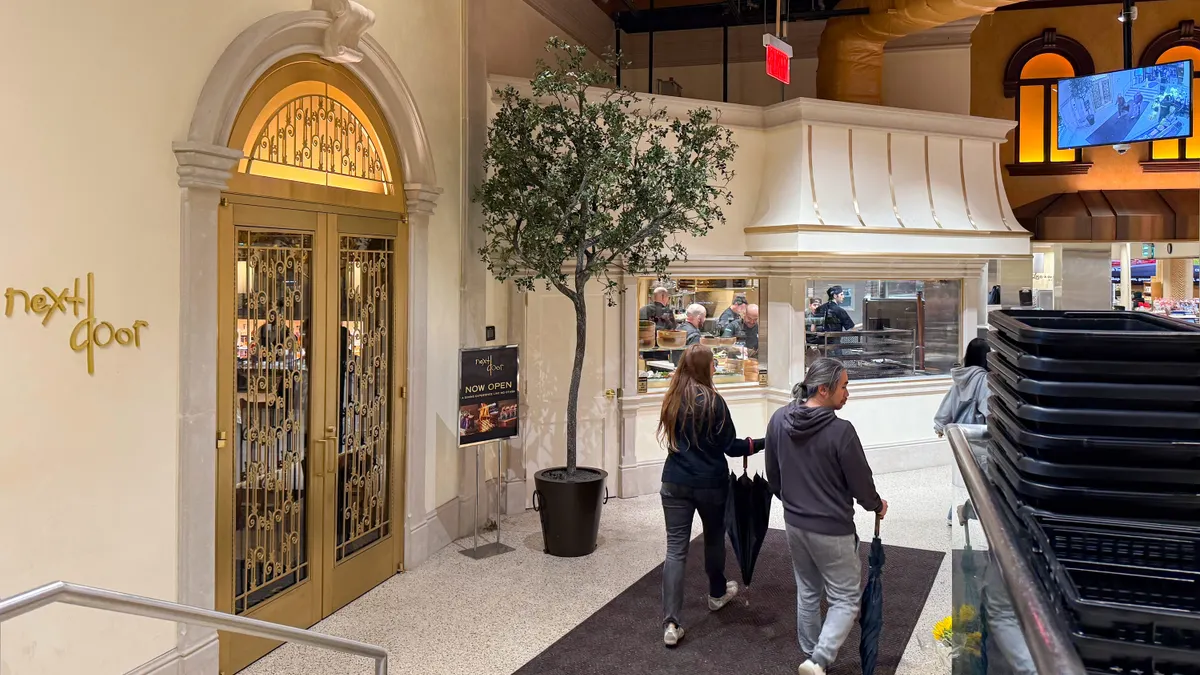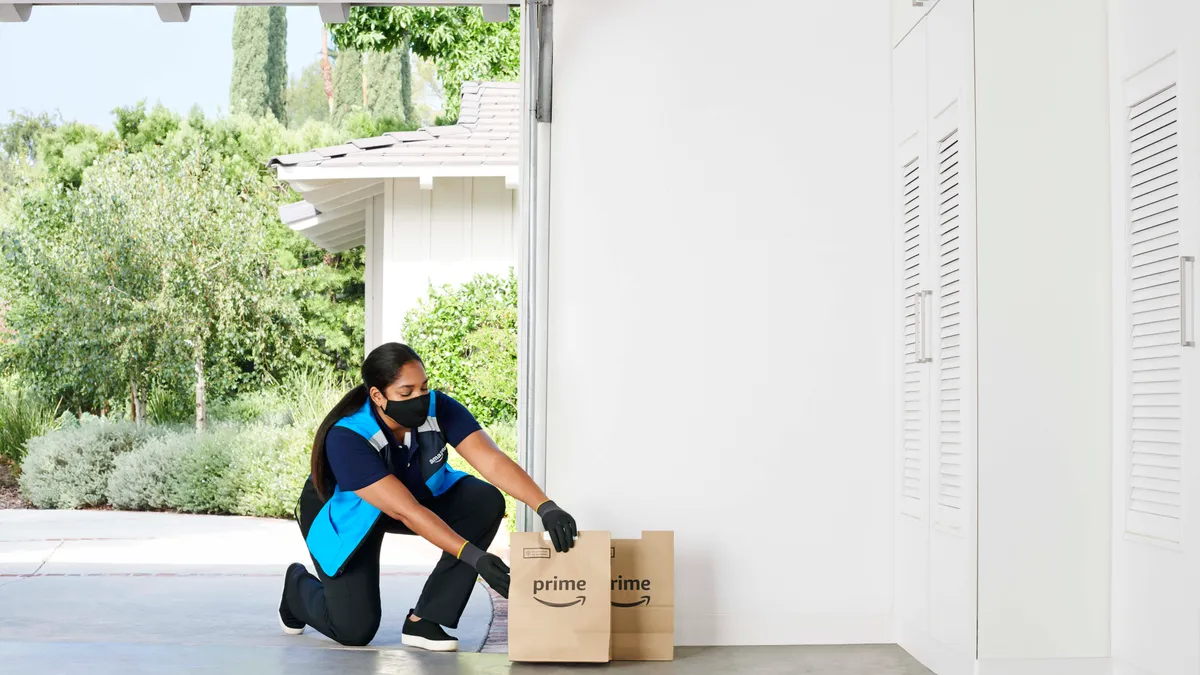One of the dominant narratives to emerge during the pandemic is that of consumers reconnecting with, and in many cases discovering, a love for cooking.
That's proven to be a boon for grocers, who have watched fresh foods and baking supplies fly off their shelves over the past several months. But research indicates some consumers are growing weary of playing the role of home chef. And then there are the millions of shoppers who never really liked to cook anyway.
"There was a point in the pandemic where I think people had a little bit of recipe fatigue," said Rachel Shemirani, senior vice president for Barons Market.
To reach all of these mealtime shoppers, grocers like Barons are offering a wide variety of innovative meal solutions, from new packaged foods and heat-and-eat dishes to recipe programs aimed at assisting cooks.
Across the country, retailers have revamped their meal strategies in response to the pandemic. Here are some of the interesting approaches to meals grocers have recently rolled out, all of which have potential to stick around post-pandemic.
Reimagining salad bars
San Diego-based Barons Market's self-service food area was a main attraction in each of its nine stores. In addition to a fresh salad bar, Barons had olive bars, vinegar and olive oil tasting stations, a hot food bar, a soup bar and a demo kitchen area where the grocer made 15-minute recipes using unique ingredients from the store.
Then COVID-19 hit. Even before the state of California required open food bars to shut down, Shemirani heard from stores that customers just didn’t want to buy food from those areas anymore.
Barons quickly decided it needed to pivot and began offering pre-packaged salads priced from $4.99 to $6.99. The self-serve salad bar was previously priced at $6.99 a pound. Now, Shemirani said there are nine to 10 different grab-and-go salad options, which are displayed in its salad bars. Customers can choose from salads like barbecue chicken ranch, kale and quinoa or antipasto salad.
Shemirani said store teams didn’t know how customers would react since Barons is known for its salad bar, but the response has been extremely positive. Some shoppers buy as many as seven salads at a time to stock up for the week.
"While our very beloved salad bar is missed, I think what we did is a really good option for [customers] and they’re happy about it," Shemirani said.
Additionally, Barons started having an employee staff its popular soup bar in order to safely serve fresh soup. Depending on the store, there are between 8 and 12 soups for customers to choose from daily, with options like white chicken chili, loaded potato soup and classic chicken noodle.
Considering salad bar sales have been slowly wilting over the past few years, a rethink of the department was already on the menu for some grocers. When Heinen's, which operates 23 stores in Ohio and Illinois, got the opportunity to bring a $35,000 salad-making robot into its stores, it jumped at the chance. Sally is currently operating in a store near the company's corporate office and will soon roll out to additional locations, said Chris Foltz, the grocer's chief innovation officer. Chowbotics, the company that manufactures Sally, just rolled out an app that makes the customer experience fully contact-free.
Other grocers like Publix and Whole Foods have transitioned to staffed salad bars as equipment manufacturers like Hussman have rolled out new stations that make room for employee servers. This month, The Giant Company became the latest grocer to link up with fast-casual chain Saladworks, adding a station serving custom salads, wraps and soups at its Camp Hill, Pennsylvania, store.
In its announcement, Saladworks said it has locations inside six grocery stores and will open 10 more locations by early next year.
Easy meal pickup and delivery
Some customers continued to turn to meal delivery during the pandemic, but with many restaurants shutting down or limiting operations, they had fewer options. Grocery stores stepped up to fill the void, adding services to make hot and cold meal delivery faster and more convenient than they were pre-pandemic.
In April, Hy-Vee launched Mealtime to Go, which added the option of hot prepared foods and take-and-bake meals for curbside pickup or delivery through DoorDash for the grocer’s customers. The new offering has resonated well with Hy-Vee customers, Tina Potthoff, senior director of communications for Hy-Vee, said in an email, and the retailer has expanded the service to its new Hy-Vee Fast & Fresh locations.
The service is safe and convenient for shoppers, with meals ready in as little as 15 minutes, Potthoff said. Mealtime to Go also includes hundreds of items from Hy-Vee’s foodservice departments, including brands like Nori Sushi and Hickory House, as well as its Market Grille and Wahlburgers restaurants.
H-E-B and Wegmans quickly transitioned their in-store restaurants to takeout service, while grocers like ShopRite and Publix promoted deli to-go apps that offer sandwiches, salads and other fare for pickup and delivery.
ShopRite also recently launched meal delivery and pickup as part of its new Fresh to Table section. The department is set up as a store-within-a-store, offering meal solutions like ready-to-heat and ready-to-eat items as well as meal bundles including pre-prepped ingredients. Customers who want to order a meal for delivery can do so through DoorDash, or they can place an order for pickup through ShopRite’s Order Express app.
Meal curation
In some cases, customers want to cook their own food but need additional guidance or inspiration. Many retailers are presenting meal ideas in new ways, from meal packs and meal deals to curated recipe ideas.
That’s where The Giant Company set its sights when it launched its All Set program in September, which is focused on promoting meal ideas for shoppers so they know exactly what to buy when they’re planning their shopping list.
Within the store circular, Giant uses the All Set label to call out meal solutions. Whether it’s a quick meal or something a customer can cook from start-to-finish with all the ingredients on sale, shoppers will know that whatever falls under All Set will be relevant and cost-effective.
One example of an All Set meal is Giant’s new Cook-In-Bag product, which includes a meat or seafood like shrimp or pork tenderloin and can be cooked in the bag once the labels are removed. There is no prep required. In stores, shoppers will see Cook-In Bag products under All Set signage, perhaps placed next to broccoli on sale, and they’ll know that’s all they need for a meal.
Another way Giant is curating meals is through its Meal Deals, which require a customer to buy one main ingredient — stew meat, for example — and get the rest of the ingredients to make the meal for free.
John MacDonald, director of marketing operations and meal solutions for The Giant Company, said that the grocer had already been strategizing about meal solutions before the pandemic. When it hit, the change in people’s shopping and cooking behavior made the company's efforts even more relevant.
"[Shoppers] still have circumstances in their lives that make them put particular meals on their table, they still have certain compelling reasons to pick these certain things for their family. They still plan, they still want to buy, they still want to cook at home," MacDonald said.
Other retailers are exploring similar ideas to help customers plan their weekly menus. H-E-B has a section on its website called Meal Simple that allows shoppers to click on a type of cuisine, like Mexican or Asian, or a category, like oven-ready, and they’ll be taken immediately to a variety of heat-and-eat or prepared food options fitting the criteria.
During the pandemic, Hy-Vee also started offering family meal deals for $19.99.
"We saw having a full family meal deal ready to go was important for our customers, and it also promotes family mealtime," Potthoff said.
Rethinking in-store meal kits
The resurgence of meal kits during the pandemic is well-documented, and Barry Friends, co-founder and partner at foodservice consulting firm Pentallect, is particularly enthusiastic about the ones on retail shelves.
"I am really high on meal kits," he said.
Friends noted that while subscription-based meal kit delivery is still useful, he’s eager to see the next phase for in-store meal kits that are packed fresh, like the ones people can get through Meisterdish, which launched a pilot with Schnucks last fall.
Though Meisterdish had to pause operations when the pandemic hit, Friends anticipates this model can go a lot further in the future, especially for stores that want to create "stickiness" outside their store circulars. In-store meal kits made with fresh ingredients from the store’s shelves and using a grocer’s own recipes could become a major competitive advantage.
"I don’t think retailers have figured meal kits out yet. The industry has struggled, but has got a really nice shot in the arm because of COVID," Friends said.
Several other retailers have been trying to push meal kits in stores again this year with a simplified approach. In Boise, Idaho, Albertsons began piloting a new type of Plated meal kit that includes pre-prepped ingredients and just requires shoppers to add a star ingredient, like rotisserie chicken.
Giant Eagle launched a new type of meal kit over the summer called Cookery Complete in 40 stores in the Pittsburgh area. Each kit features a raw protein, sauce and vegetables. The product was introduced as an addition to Giant Eagle’s other meal kits and meal solutions.









